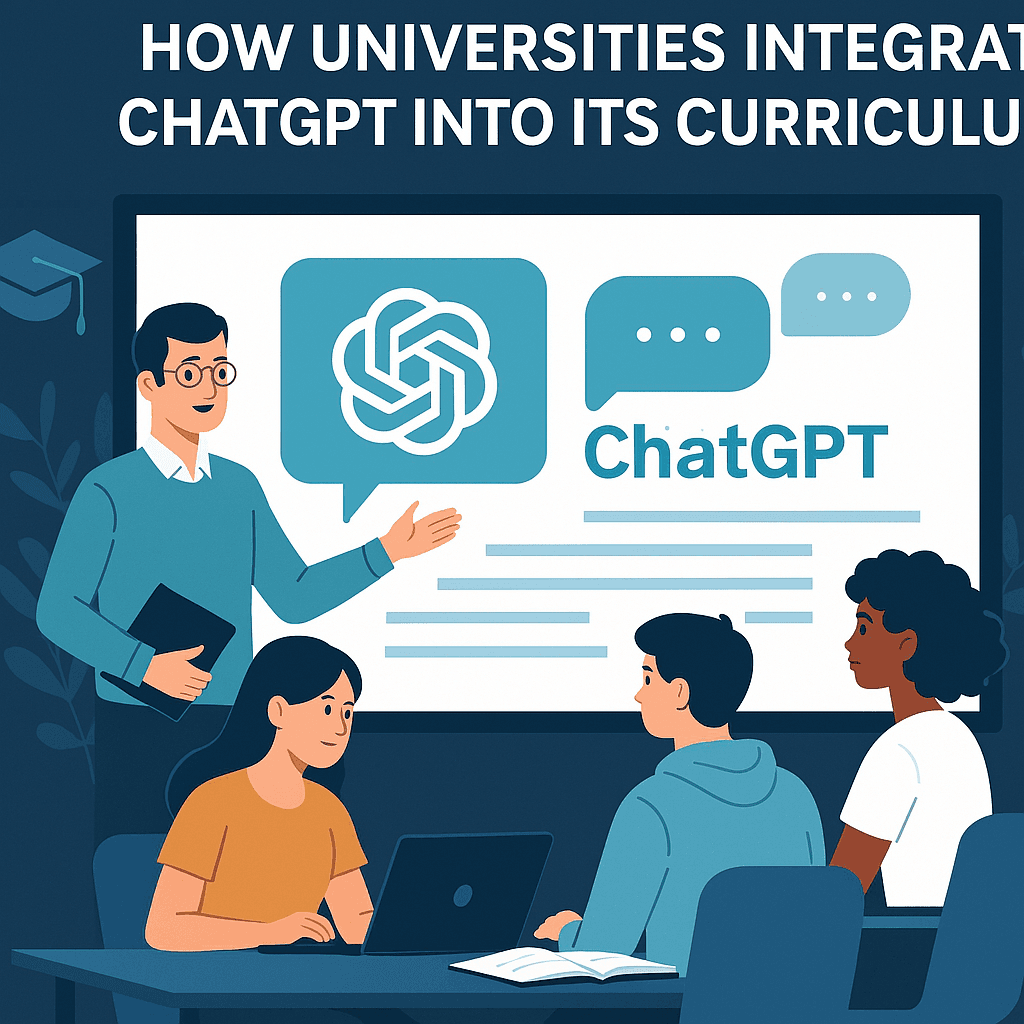
The question of how universities integrate ChatGPT into its curriculum is becoming increasingly relevant as artificial intelligence reshapes the landscape of higher education. ChatGPT, one of the most sophisticated generative AI tools available, offers new opportunities for enhancing learning, improving research methodologies, and streamlining administrative processes.
From supporting research writing to facilitating student engagement, universities around the world are adopting AI tools like ChatGPT to prepare students for an AI-driven future. But how exactly is this integration happening, and what are the practical benefits?
Top-Rated AI Assessment Tools for Schools and Universities in 2025
Why Universities Are Embracing ChatGPT
The reasons why universities integrate ChatGPT into their curriculum are numerous, but a few stand out:
- Enhanced Learning Efficiency
ChatGPT helps students generate ideas, structure essays, and even refine their research methodologies. It offers real-time support, saving valuable time for both students and instructors. - Personalised Learning
By leveraging ChatGPT’s natural language processing capabilities, universities can provide personalised learning experiences. Students receive feedback and resources tailored to their specific needs. - AI Literacy
Understanding how to use AI tools effectively is a skill itself. By incorporating ChatGPT into the curriculum, universities ensure students are prepared for the evolving job market.
How Universities Integrate ChatGPT Into Its Curriculum
Various approaches demonstrate how universities integrate ChatGPT into its curriculum. These methods range from academic writing support to creative projects and research analysis.
1. ChatGPT for Academic Writing and Research
One of the most popular applications of ChatGPT in universities is for academic writing and research. Students can use ChatGPT to brainstorm ideas, draft essays, summarise research articles, and even generate citations.
Example:
The University of Cambridge has introduced ChatGPT workshops as part of its academic skills programs. Students are encouraged to use AI tools for preliminary research, essay structuring, and language refinement. However, instructors emphasise that AI-generated content should be critically evaluated and used only as a supplementary resource.
Benefits:
- Enhanced clarity and coherence in writing
- Reduced writer’s block
- Improved efficiency in literature reviews
2. AI-Assisted Learning Platforms
Universities are also integrating ChatGPT into learning management systems (LMS) to enhance instructional delivery and improve student engagement.
Example:
At Harvard University, ChatGPT is embedded within their LMS to act as a virtual tutor. Students can ask the AI tool questions related to coursework and receive instant explanations, resources, and study recommendations.
Benefits:
- Personalised learning support
- Instant feedback on assignments and quizzes
- Enhanced engagement through interactive learning experiences
3. Research Methodology Enhancement
Researchers and postgraduate students are increasingly using ChatGPT to enhance their research processes. From drafting proposals to summarising complex papers, ChatGPT offers valuable assistance.
Example:
The Massachusetts Institute of Technology (MIT) encourages PhD candidates to use ChatGPT for developing research questions, generating hypotheses, and structuring literature reviews. Faculty members guide students on how to ethically integrate AI tools without compromising academic integrity.
Benefits:
- Improved research productivity
- Structured research processes
- Enhanced critical analysis through AI-generated prompts
4. Creative Writing and Content Generation
Universities are also exploring how ChatGPT can be used creatively. From generating poetry and short stories to drafting marketing plans, students are encouraged to use AI as a creative companion.
Example:
At New York University (NYU), creative writing programs incorporate ChatGPT as a brainstorming tool. Students use the AI to generate story ideas, character profiles, and dialogue prompts, enhancing creativity and innovation.
Benefits:
- Enhanced creative expression
- Exposure to AI-driven storytelling techniques
- Encouragement of experimental writing practices
Ethical Considerations and Challenges
While the advantages are clear, how universities integrate ChatGPT into its curriculum must be approached with care. Potential challenges include:
- Plagiarism Risks: Students may misuse AI tools to generate essays or assignments without proper attribution. Universities need to establish clear guidelines for ethical AI use.
- Bias in AI Outputs: AI tools like ChatGPT can generate biased or inaccurate information. Educators must guide students in critically evaluating AI-generated content.
- Data Privacy: Universities must ensure that AI platforms comply with data protection regulations like GDPR and FERPA.
Despite these challenges, responsible integration of AI tools can significantly enhance teaching and learning outcomes.
Conclusion
The question of how universities integrate ChatGPT into its curriculum is one that more institutions are exploring with each passing year. From academic writing support to research enhancement and creative expression, ChatGPT is proving to be a valuable tool in higher education.
However, success depends on establishing clear guidelines, promoting ethical use, and providing adequate training. As universities continue to experiment with AI integration, those that embrace innovation while maintaining academic standards will be best positioned for the future.
Visit The Case HQ for 95+ courses
Read More:
Critical Role of AI Tools in Preserving Academic Integrity in Education
Powerful Tools and Techniques for AI in Formative Assessment
Transforming Summative Assessments with AI: A Smarter Future for Education
How AI in Grading Rubrics Ensures Unmatched Consistency and Fairness in Education
Powerful Adaptive Learning Paths: How AI Tailors Assessments to Learners’ Needs
Utilizing Published Sources in Case Study Research: Advantages and Pitfalls
Leveraging Case Studies for Business Strategy Development
Inspiring Innovation Through Case Studies: A Deep Dive
The Art and Science of Writing Effective Case Studies
Exploring the Role of Case Studies in Market Research
How Case Studies Foster Critical Thinking Skills
https://thecasehq.com/innovative-strategies-how-universities-integrate-chatgpt-into-its-curriculum/?fsp_sid=1095
Comments
Post a Comment